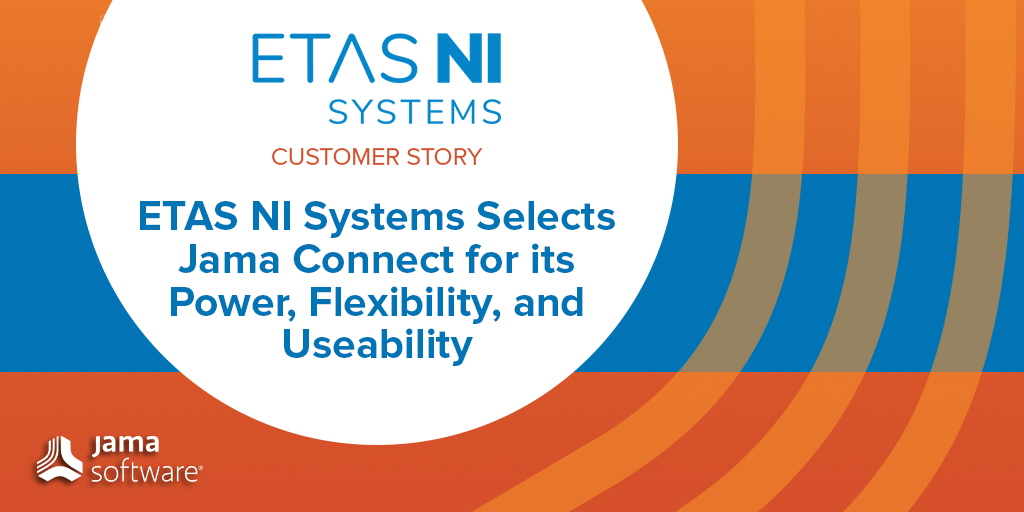
In this blog, we recap this customer story, “Innovative Aerospace Manufacturer Chooses Jama Connect® to Help Revolutionize Space Transportation.” Read the entire story HERE.
Launching spacecraft and satellites into orbit are highly complicated endeavors and like many large organizations, this rocket and spacecraft manufacturer was struggling to provide visibility, manage, changes to requirements, and meet aggressive schedules.
In 2010, this industry-leading space exploration technology company selected Jama Connect to help its team develop new ways of working to simplify requirements management, improve visibility, and customer communication, and create an efficient, paperless product delivery process.
They saw significant improvements to its requirements management process with Jama Connect, including:
- Reducing meeting times, simplifying cumbersome specification docs, and improving overall communication to ensure all requirements were accounted for accurately
- Better traceability from requirements to derived requirements to verification events
- Improved customer relations with shared project visibility and enhanced communications
RELATED: Certification and the Role It Plays in the eVTOL Aircraft Market
Jama Connect® helps an innovative aerospace company keep track of thousands of requirements by providing a platform for greater visibility and collaboration with its team and customers
This innovative aerospace launch company designs, manufactures, and launches the world’s most advanced rockets and spacecraft. In just ten years, the company has emerged as one of the fastest growing aerospace companies in the world working toward their vision to revolutionize space travel.
CHALLENGES
• Providing visibility and managing customer expectations
• Managing inevitable change to requirements and other important details
• Eliminating rework in order to meet aggressive schedules
EVALUATION
• Utilize Jama Connect’s Review Center for open customer and internal communication
• Track requirements for faster change management
• Maintain common requirements in one place to prevent repeats
RESULTS
• Helped reduce meeting times, simplify cumbersome specification docs, and improve overall communication to ensure all requirements were accounted for accurately
• Provided a method for traceability from requirements to derived requirements to verification events
• Improved customer relations with shared project visibility and enhanced communications
• Accounted for contract milestones and ensured timely payments
RELATED: 15 Digital Twin Applications and Use Cases by Industry in 2022
Challenge: This is Rocket Science
Launching spacecraft and satellites into space is a highly complicated endeavor. Like many other large organizations tackling complex projects, the company initially faced a few critical business challenges that Jama Connect could help them address:
• Providing visibility and managing customer expectations
• Managing inevitable change to requirements and other important details
• Eliminating rework in order to meet aggressive schedules
As a customer, NASA needed visibility into the company’s progress to ensure key requirements were being met. Prior to using Jama Connect, the company did not have an easy way to share quick status reports on requirements verification. As a result, many hours were spent compiling status and change-control reports.
This process, although effective, took too much time. Hours were spent in meetings reviewing large cumbersome spreadsheets – going line by line to review thousands of details. The company had to implement complex macros to pull information from Microsoft Excel into Word documents to create specific reports. This was time-consuming for everyone involved. The company wanted to share real-time information with NASA for their review and approval, but they did not have an easy way to accomplish this level of collaboration prior to using Jama Connect.
Solution: One Small Step for the Company, One Giant Leap for Efficiency
The company implemented Jama Connect in 2010, wanting to develop new ways of working to simplify requirements management, improve visibility and customer communication, and create an efficient, paperless product delivery process.
To read the entire customer story, visit “Innovative Aerospace Manufacturer Chooses Jama Connect® to Help Revolutionize Space Transportation.”



 Editors Note: 2020 was a year we’ll never forget. But amidst a sea of setbacks, companies across the globe continue to rise to the challenge and push forward with innovative product development. Teams who have the right tools and processes in place especially across distributed teams are able to improve collaboration and speed the time it takes to deliver new, innovative products.
Editors Note: 2020 was a year we’ll never forget. But amidst a sea of setbacks, companies across the globe continue to rise to the challenge and push forward with innovative product development. Teams who have the right tools and processes in place especially across distributed teams are able to improve collaboration and speed the time it takes to deliver new, innovative products.
